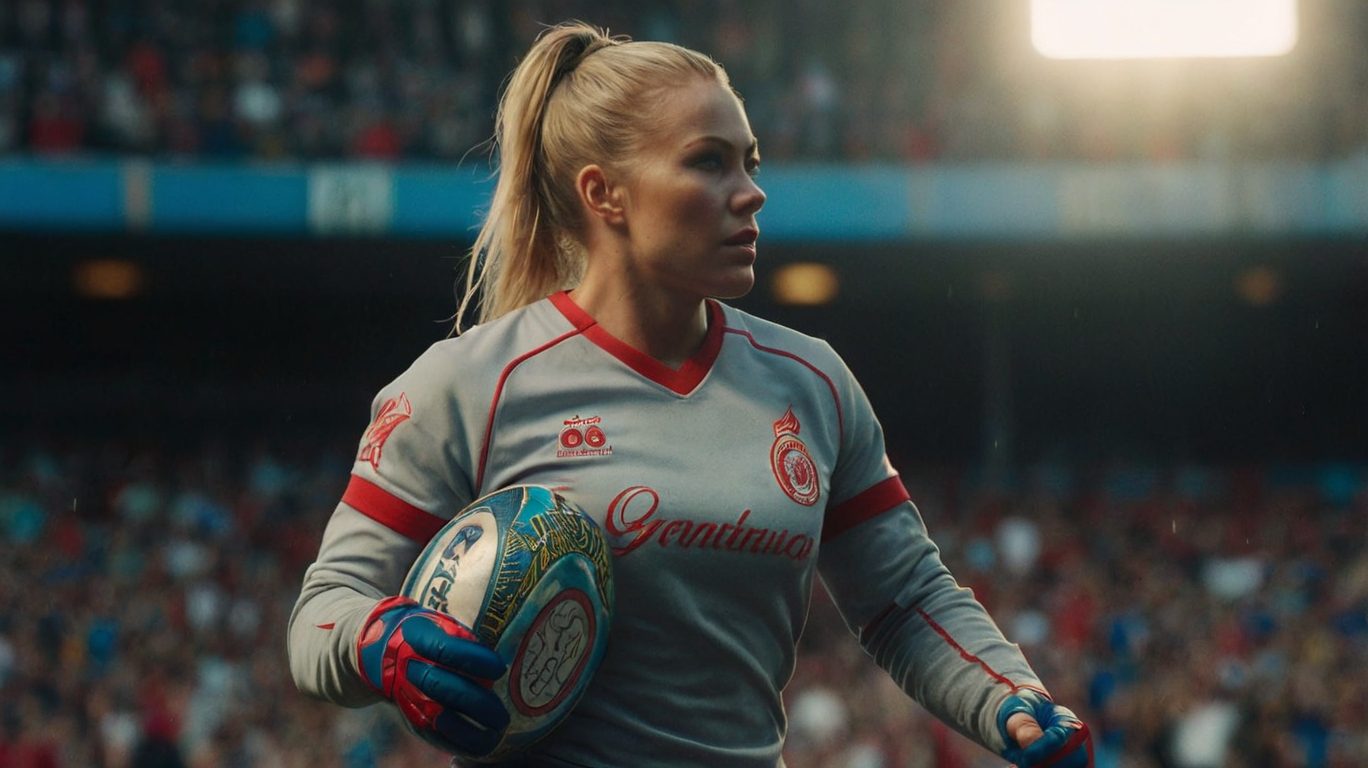Charlotte Caslick’s Injury Blow: What It Means For Wallaroos At The Rugby World Cup
The Rugby World Cup presents a unique opportunity for athletes to make history. For Australia, one of the most intriguing narratives leading up to the 2025 tournament in England was the inclusion of Charlotte Caslick, a leading figure in the Australian Olympic squad, who was transitioning from Sevens to the 15-a-side format. However, they were dealt a crushing blow when Caslick was ruled out of the tournament due to lack of recovery from ankle surgery. This leaves the Wallaroos without one of their most experienced and influential backs.
The news not only reshapes Australia’s campaign but also highlights the intricacies of player transitions, team composition, and the razor-thin margins in elite performance.
Caslick Injury and the Race to Recovery
Caslick, 30, sustained the injury during Australia’s defeat to New Zealand in July. There were hopes that the Walleroo’s opening fixtures against Samoa on 23 August would mark her return to the squad, but her recovery timeline suggested otherwise.
“Sometimes time can be the hardest opponent,” Caslick said on Instagram, sharing her thoughts on the unfortunate truth of injuries in elite sports. As she stated, the journey to the 15s code is a journey of self evolution:
“As a wallaroo, I can say that I couldn’t be more proud. I’ll be cheering the girls on from home. Some endings might not be fair, but they still do exist.”
There was an outpouring of support from former colleagues, supporters, and even opponents acknowledging the impact of her absence which celebrates the post.
From Sevens Superstar to 15s Pioneer
This year, one of the most watched stories in women’s rugby was Caslick’s transition to 15s. She is a born leader and a towering figure in Australia’s Sevens structure. Her resume can be as long as Olympic gold medalist, a winner of the Sevens World Cup, and being a nominee to the World Rugby Sevens Player of the Year Award several times. She also has over a decade spent in the elite level of the fast paced and skill intensive Sevens world.
By adopting the 15s version of the game, it became more physically demanding, and roughly structured it as a personal endeavor but also a sign to fans of the bridging of two worlds of physically demanding sports. For many, it was a way of demonstrating intent towards the Wallaroos, bringing a winning star to enhance the standards and motivate the newer players.
As for Caslick, she has confirmed the transition was not easy. She spoke in interviews about the adjustment to longer game times, more intense defenses, and the more tactical element of 15 a side play. Still, she was able to impress many in the early rounds with her agility and steadfast tackling, as well as her advanced vision and footwork – traits that made her a world class Sevens player.
Impact on the Wallaroos
Losing Caslick is a huge impact to Australia. It does not only take away a proven player, but a strong leader when the team desperately needs that calm and together feeling.
Jo Yapp, the head coach who has the Wallaroos under his guidance, is known for his attacking style of play. While acknowledging the setback, he emphasized the adaptability of the squad.
“Charlotte brought something unique to our backline. Her experience, her confidence under pressure, and her ability to create space are qualities you can’t replace directly. But this is also an opportunity for others to step up and grow.”
The removal of Caslick means Wallaroos are forced to adjust their attacking strategies. They are now more likely to depend on Arabella McKenzie at flyhalf to manage the pace. Simultaneously, Georgina Friedrichs and Maya Stewart are expected to provide finishing power on the outside and replace the edge.
Allow me to introduce you to teenage debutant Manua Moleka.
Jo Yapp has summoned Manua Moleka, an 18 year old back who has no previous caps to her name. She now carries the daunting and thrilling possibility of a debut at the Rugby World Cup.
While it might seem to some that this selection is a leap of faith, it does have some reason to it. Everyone will agree that Manua has some raw skill to her, for example her pace, agile movements, and fearlessness with the ball. All of those things were on display during domestic competitions. While coaches view her as a project, this World Cup could do wonders for her.
Some critics may think that putting a teenager in the spotlight could be risky; however, others view her as the kind of wildcard who has the potential to electrify the tournament. Throughout the history of the Rugby World Cup, Australia has always hoped that a fearless performer has the ability to channel nervous energy into powerful showings, and Australia certainly has hope for Moleka.
The Possibility of a Return
While Yapp has eliminated any hopes for Caslick, he did say that there is still a slight chance that the veteran could come back to the team mid-tournament if there is a need for someone to fill in due to injury.
In Yapp’s explanation, he said, “We’re not closing the door entirely. Depending on how Charlotte’s recovery progresses, there’s a possibility she could be available toward the end of the pool stage or for the quarter-finals.”
That type of hope always seems to come in handy, especially for players that need to be on the sidelines for a while. In the history of rugby, there have certainly been cases of players returning for the knockout stage, and those have been players that were previously injured. In 15s, a return to play is certainly a dangerous option, especially with how physically demanding the sport is. Because of that, there has to be an extremely optimistic hope for her rehab recovery.
The Bigger Picture: The Growth of Women’s Rugby
The story of Caslick’s injury reveals a wider story concerning the development of women’s rugby in 2025. The sport is undergoing immense expansion:
The Rugby World Cup 2025 is predicted to be the largest women’s tournament to date, with increased attendance and stadiums expected to be filled to capacity across England.
There is an increasing number of crossovers between the Sevens and 15s formats, indicating the increasing fluidity and adaptability of female athletes.
Investment into women’s rugby is increasing alongside media coverage, leading to the recognition of athletes such as Caslick, whose fame now exceeds rugby.
While her absence may cause the loss of one of the tournament’s most famous individual names, it does allow the tournament to focus on up and coming stars such as Moleka and showcase the development of talent that is being nurtured worldwide.
Australia’s Tournament Draw and Path
The Rugby World Cup will start on 22 of August with the first match taking place in one of the English venues. The final match will be in Twickenham on 27 September. The tournament promises to be a celebration of rugby across the iconic English venues.
Australia has been placed in a challenging group together with Samoa and Canada, as well as cross-border rival Italy. All known for their brute strength and tactical discipline, these teams will pose a challenge to Australia. Without Caslick, the Wallaroos would be forced to rely on unstructured teamwork, blunt physical front row strength, and precise finishing to advance.
If they qualify for the knockout stages, they would face England, New Zealand, and France. For a team already considered underdogs, the absence of Caslick only strengthens these challenges.
The Legacy of Caslick, Win or Lose
Her impact on Australian rugby is undeniable, and if Caslick never steps on the field during the World Cup, her legacy is already confirmed. She shows younger players how to model adaptability and courage by switching codes at the age of 30.
Her legacy is already set with her Sevens accomplishments as one of Australia’s greatest rugby exports. The gap of Fifteens is quite large, and her brief dip into it may inspire a lot more players to attempt to close that gap.
The risk athletes take and the resilience they show when things don’t go to plan is always a big part of it. Sport is never as simple as “more medals” and “less effort,” and a universal truth is that it is often a combination of both.
Finale, A Door Slams while Another one Opens
The Wallaroos suffer a lot from Charlotte Caslick’s withdrawal for the Rugby World Cup, but her absence does create opportunities. These include: Manua Moleka announcing herself, Jo Yapp showcasing her tactical ingenuity, and the Wallaroos proving they’re more than one star.
For fans, this serves as both a reminder of how fragile sporting dreams can be, but also of the drama that makes the World Cup so captivating. As for Caslick, her journey is still incomplete. Whether she steps back into action during the tournament or fully commits to recovering and later transitioning to the Sevens format, her impact on Australian rugby is undeniable.
As the Wallaroos prepare to take the pitch in the absence of their shining star, one fact is certain. The tale of Rugby World Cup 2025 has merely started, and as with all exceptional sports stories, it’ll be crafted not only by the players we anticipate, but also by fresh faces who take advantage of the opportunity.
Read more rugby updates at SportFlashHQ.

